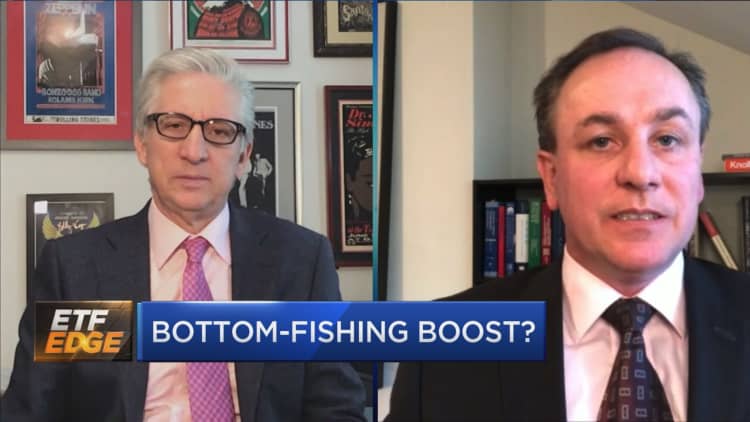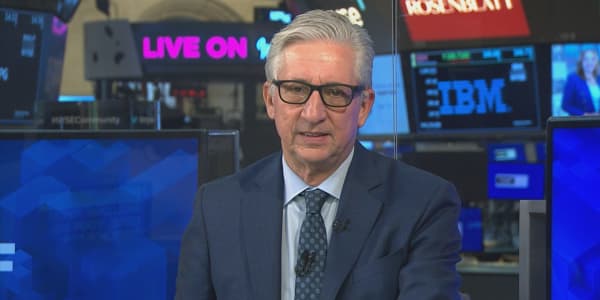
The Nasdaq's ETF ranking reveals a lot about how traders and investors are playing the market.
The exchange's economics research division released rankings of the top 25 ETFs for the last week and month on Monday, with the U.S. Global Jets ETF (JETS) topping both lists.
Its top 25 ETFs for the last week are:
Its top 25 ETFs for the last month are:
The Nasdaq uses a combination score for its ranking that considers four factors: the ETF's potential for return, or how much it moves; its inflows and outflows; how many of its shares trade (above-average share counts get priority) and its ability to grow assets in absolute terms.
With ETFs accounting for about 40% of the value traded during the March sell-off, according to Nasdaq Economics Research, the rankings have shed light on buyers' strategies, Phil Mackintosh, Nasdaq's chief economist, told CNBC's "ETF Edge" on Monday.
"You've really seen a cycling of investor appetite," Mackintosh said. "Back in March when everything was a rush for cash, there was a lot of trading by the experts that use ETFs, and it's sophisticated retail [investors] as well as sophisticated hedge funds."
But while home construction, regional banking and oil services ETFs topped the Nasdaq's 1-month ranking, the 1-week ranking shows some previously lagging trades coming back into favor, Mackintosh said.
"We've seen value, we've seen small cap[s] and we've seen a lot of trading into international markets because they've been stretched on the downside, probably oversold," he said. "As we see people getting back to work, as we see Europe getting back to work and not seeing a case spike, it makes sense to start to think about whether those economies might recover a little bit more quickly than the U.S. market."
Dave Nadig, chief investment officer and director of research at ETF Trends, interpreted this week's ranking as more and more buyers trying to call a bottom in various market groups.
"We've seen things with USO when people were trying to call the bottom in oil. We saw that with JETS when people were trying to call the bottom in airlines," Nadig said in the same "ETF Edge" interview.
The United States Oil Fund (USO), which is popular among retail investors, went through a series of structural changes to stave off collapse in April as the oil futures it trades plunged into negative territory. It has been on a steady incline since the end of April, while JETS has taken off since mid-May.
USO climbed less than 1% in Tuesday's trading session, while JETS shares fell nearly 8%.
"I think it's a mistake to think that the billion dollars that has flowed into [JETS] is all mom-and-pop investors," Nadig said. "That's not what we see in the 13F filings. It's not what we see on the tape. It's clear there are some very sophisticated folks out there, most likely hedge funds, using this. It's a well-constructed fund if you're trying to play the airline industry."
Even so, Nadig wasn't surprised to see "bottom-fishing" in ETFs tracking beaten-up groups such as the small caps, oil plays or financial services stocks.
"We're seeing it in every sector that got heavily beaten-up in the worst of it in March," Nadig said. "We just had the Russell [2000] cross its 200-day moving average to the upside. When we talk about financials, we're seeing a bunch of those stocks come back. Value. All of these are, as Phil pointed out, these kinds of reversal plays. And sure, there's definitely some retail participation there, but I think it would be a mistake to think that this is just pajama pants traders."
Tech stocks rose meaningfully on Tuesday, with the Nasdaq Composite cracking the 10,000 level for the first time ever. The other major averages slid in afternoon trading.





